|
While there are many things to love about autumn here in the northeast - apple picking, football, foliage - it is also the perfect time to travel abroad. Fall usually means fewer crowds, more comfortable temperatures and stellar weather for exploring outdoors in both the northern and southern hemispheres. Here are five of my favorite fall destinations: I spent about three weeks in China last October and almost every day was perfection. Beijing, known for its relentless smog, is supposed to be clearest and cleanest in October and it did not disappoint. Autumn brings colorful foliage in the northern countryside resulting in spectacular views from the Great Wall. It is warmer farther south, but not oppressively hot. Shanghai's weather was incredibly comfortable requiring a tank top by day and light jacket at night. My favorite place in China - Yangshuo - offered 70 degree F days, perfect for biking through the karst mountains. While October is a great month to explore China, be sure to avoid the first week as it's a national holiday called "Golden Week", when prices and crowds skyrocket across the country. Read more about my adventures in China here. While Paris is beautiful any time of year, I especially love autumn. The crowds are significantly reduced since all the students are back in school, and while the temperature can sometimes be a bit chilly, it's usually great for long walks around the city. We walked and biked all over Paris and Versailles and the cool air gave us plenty of motivation to continue moving! Autumn is also the perfect time to enjoy a warm drink at an outdoor cafe. Nothing goes better with a glass of Bordeaux than a cozy sweater. Read more about Paris here. The high season for Koh Lanta - and the rest of the islands along the Andaman Sea in Thailand- is November through April. We were there in late October/early November which is technically "shoulder season" - the end of the low season and beginning of the high season. This meant great deals and fewer crowds. For example, we had no problem booking hotel rooms or scuba dives a day in advance. We only had one weather woe - a rain downpour that lasted about an hour. The rest of the week brought sunshine, warm breezes and spectacular sunsets. Interested in visiting Koh Lanta? Check out our guide to Koh Lanta. While it's been almost ten years since we've been to Ireland, we still talk about that vacation. The weather was marvelous for hiking and pub crawls - two of Ireland's best pastimes. The cooler temps meant we could hike without getting too hot and also suited the cozy cavernous pubs scattered throughout the countryside. Like the northern US, mid-October is the height of colorful foliage which looks extra beautiful surrounding Ireland's castles, stone walls and green hills. Definitely check out Galway, the Ring of Kerry and the Dingle Peninsula this time of year. If you like stunning views, friendly locals and pub food you will not be disappointed! Since Australia is in the southern hemisphere, their seasons mirror ours in the north. Therefore, Australia experiences spring during the months of late September, October and November. Queensland summers are hot & humid and monsoon season begins in late November through April. I think we visited during the best time of year - late September/early October. With the exception of a freak wind storm in Airlie Beach, the weather was beautiful and the water visibility was incredibly clear which made for phenomenal scuba diving. While the water in New South Wales required a wet suit, the crisp, sunny days were perfect for hiking and walking around Sydney. Considering a visit to Australia? Read our tips for driving up Australia's east coast and for more general Australia information see our Australia information page.
0 Comments
During our last two days in Beijing we visited the Summer Palace, saw an acrobat show and spent time wandering around the old part of the city. Summer Palace The Summer Palace is located northwest of the city center, about a 45-minute drive from our hotel (without traffic). It was originally built during the Jin dynasty in the 1100's and was subsequently used by the Yuan, Ming and Qing dynasties. It served as a summer resort for royalty. Our driver dropped us off and we spent about three hours wandering around the palace grounds, which included walking the entire circumference of Kunming Lake. Duck Tale Our visit wasn't ideal because the weather was really hazy and grey and the palace was jammed packed with visitors. It was more crowded than usual because it was the weekend and everyone was coming to see the giant Rubber Duck by Dutch artist Florentijn Hofman, which was temporarily in Beijing. According to Hofman, the giant duck is on a world tour in an effort to evoke peoples' fondest childhood memories, which will hopefully inspire peace and liberty instead of war. A rubber ducky might conjure up nostalgia for Westerners, but it doesn't for most Chinese since they never owned the floating yellow bird as children. Despite this fact, the duck has given a nice boost to the local economy - generating millions of dollars in park admission fees and in restaurant, merchandise, transport and accommodation sales. The rubber duck might not evoke nostalgia from Chinese adults right now, but I have hunch it will for future generations! From our perspective, the rubber duck was a nuisance. We came to see the Summer Palace for its history, architecture and natural beauty. The rubber duck was a massive distraction - like a huge zit on a beautiful face. It also drew hordes of people to the park, which we could only escape once we walked to the other side of the lake. I really liked Zhang Shaohua's perspective as reported on China.org: If they wish to have it represent liberty, the Rubber Duck should be set free onto the open sea rather than being chained down to float in a lake. I couldn't agree more and I like the idea of a massive duck floating aimlessly in the sea, perhaps washing up on the shore of some tiny island in the Pacific. Nevertheless, we had some fun with the duck. The Red Heads & The Acrobat Show That night we went to an Acrobat show at Chaoyang Theater. Acrobatics is very popular in China, so we decided to see what all the fuss was about. To get to Chaoyang, we took the subway to the Hujialou stop and walked across the street to the theater. The tickets were inexpensive - about 12 USD. You could spend about eight times as much for VIP seats, but the theater is tiny and there really isn't much of a difference between the VIP and regular sections. I had mentioned in previous posts that I was getting a lot of attention from the Chinese tourists while in Beijing. Well, I fell out of the limelight at the acrobatics show. A family with two read-headed boys showed up at the theater and the Chinese tour groups went NUTS. It was like they had won the lottery! They crowded around the boys and took pictures of them and with them. The boys handled all the attention really well and although they were a little shy, they posed for pictures with all the strangers. The show was really exciting and pretty amazing. We've never seen an acrobat show before, so I don't know how this compares to others, but we though it was impressive. My favorite acts were the hat jugglers, the bicycle acrobats and the motorcycle cage (8 full-sized motorcycles riding around one spherical cage). We took some video which you can see below. The only caveat is that the theater smells of exhaust after the motorcyle act. But at least it's the last act. Also, guy next to me in the theater was from Dorchester. Small world! Hutong Time The next day we gave our driver the day off so that we could do some exploring on our own. We took the subway over to the Beihai North stop, then walked northward toward Beijing's inner-city lakes. Surrounding the lakes are really interesting old hutongs, or traditional neighborhood streets, which look much like they did in the old days (though they are now paved and feature plenty of parked cars). A Different Drum As we completed our circuit around the lakes, we emerged near the Drum Tower. This ancient tower's top floor contains an array of massive drums and antique time-keeping devices. In the old days, the tower staff was Beijing's official time-keeping authority. The clever devices were used to keep track of passing time, and the drums were used to announce the time to the rest of the city. Climbing the steps inside the tower also rewards visitors with a beautiful view of north Beijing. Gazing southward from the tower's observatory. In the distance, you can see the man-made hill that once formed the northernmost part of the Forbidden City. Today it's a park just outside the northern gates of the City. Of course, no aerial picture of present-day Beijing would be complete without at least one crane. Vegetarians In Beijing? They Do Exist. There's no doubting the fact that Beijingers love their meat. I was really hoping to take a night off from the heavy protein, however, so we found one of Beijing's few vegetarian joints. If you're in Asia and are looking to eat vegetarian, here's a little hint - find the nearest Confucianist or Buddhist Temple. Odds are there will be a restaurant nearby catering to the local monks who do not eat meat. We found Xu Xiang Zhai across the street from a Confucianist Temple not too far from our hotel. We enjoyed a huge and really interesting buffet with all sorts of creative vegetarian dishes - it was wonderful! With our time in Beijing drawing to a close, we got ready for our early train to Shanghai the next morning...
I'm in Heaven The Temple of Heaven that is. This is a famous site in southern Beijing that houses several old temples and royal sites. It was primarily utilized during the Ming and Qing dynasties, when emperors would lead ceremonies meant to bring about a good annual harvest. The complex was built between 1406-1420, by the same emperor responsible for the construction of the Forbidden City. The emperor of China was regarded as the son of heaven and represented heavenly authority. Twice a year, the emperor would travel from the Forbidden City and make sacrifices to heaven here, in effort to pray for a good harvest. The ceremony had to be perfect. One tiny mistake would interpreted as a bad omen.
The Imperial Vault of Heaven is surrounded by an "Echo Wall". Supposedly if one person whispers by the wall, another person can hear them clearly elsewhere in the courtyard. In the picture below, Chris attempted to whisper something to me and I couldn't hear a thing. It was a pretty funny scene - a bunch of tourists talking to a wall.
A bunch of tourists atop the Circular Mound Altar. In the middle, there is a single round plate, which is surrounded by a ring of nine plates. This is surrounded by a ring of 18 plates, and this continues in multiples of 9 for 9 rings. This was done on purpose, because the number "9" represents the emperor.
Feeling the Love It turns out the Chinese people love me (and I them). Before we came to China, we expected that Chris might draw some attention because of his height. However, the Chinese were more interested in me. As I walked through the tourist attractions, people would stare at me with big smiles, point at me with enthusiasm, wave, and often times they would ask me to pose for pictures with them. Sometimes, shy people would stand next to me and pretend to take a picture of something in front of us, when I could see that they flipped their camera view and took a selfie with me in the background (likely looking really confused or angry as I sometimes suffer from Resting Bitchy Face). We were trying to figure out why I was getting so much attention, but came up empty. Nonetheless, who am I to shun the limelight? We caught a few of these friendly tourists on camera and these two were my favorites: The Forbidden City Next, we made our way up to the famous Forbidden City, which was packed with tourists. We procured an audio guide here, as we'd read good things about it. We had also read that the audio guide was narrated by Roger Moore, but unfortunately, they've replaced him with an anonymous Chinese female. We found this disappointing. Nevertheless, onward. Tiananmen Square Outside the Forbidden City complex is Tianamen Square. Since we were in the area we stopped by for a look. Me, Mao, and the Tianamen Gate. The characters on the gate say: "Long Live the People's Republic of China" and "Long live the Great Unity of the World's Peoples". This gate connects the Forbidden City - the ancient center of China - to Tiananmen Square - the modern, center of China. I'll admit, it doesn't quite feel right for me to be smiling here given its history (kind of like smiling in front of the Berlin Wall).
That concludes another wonderful day in Beijing! Stay tuned for more adventures tomorrow...
After securing our Chinese visas in Hong Kong, we were off to visit the mainland! Our first stop was Beijing, where we'd stay for 5 nights. We got a great rate on a room at the Park Plaza which is located in a very nice area of the city full of offices, upscale malls and a pedestrian shopping area. We considered staying at one of the traditional locally-owned courtyard-style Chinese hotels, but opted to go with a more mainstream hotel because we really didn't know what to expect from the city and felt comfortable that at least the hotel had English-speaking staff and a concierge that could help us to get our bearings. Lucky Us We were very lucky in Beijing. My cousin, Antonio, works for a large tech company in Beijing and generously offered us use of his driver and his administrative assistant who is fluent in English. He and his family were out of the country on vacation during our visit, so unfortunately we didn't have the chance to see them. We also received a list of things to do in China from our friend CJ, who has spent a lot of time in this country. It was incredibly helpful and saved us lots of planning time. We gave our list to Antonio's admin who provided us with feedback and then set up our driver for the next few days. Easy! We'd initially thought of hiring a guide in China, but with Antonio's driver & admin, CJs recommendations and our guide book we felt comfortable without one. First Impression Our driver picked us up from the airport and we made the half-hour drive to the hotel with our eyes glued to the window, as we were so curious to finally see this famous Chinese city. After we checked into the hotel, we spent the afternoon checking out the immediate area around the hotel. It was very modern, and full of luxury malls and fancy car dealerships. It reminded me of LA without the palm trees. There were several businesses in the area, resulting in sidewalks full of well-suited young professionals and coffee shops on every block. This was so far off from what we both expected. We thought it would look a little more like the streets of Sheung Wan in Hong Kong - densely packed narrow streets with old buildings, shops, cars, bikes and people. While there were a lot of people, it was very spacious, modern and organized. Aside from the Chinese characters everywhere and the occasional Chinese-style architecture, this could have been a city in the US. The Great Wall of China Our first full day was a busy one. Our driver picked us up at 6:30am and took us to Mutianyu - one of the many sites along the wall. It was about an hour and a half ride, and we arrived right after the site opened for the day, and before all the locals and hawkers set up shop. Initially we had planned to stop off at the Ming Tombs on the way back, but ended up scrapping this idea as it was a bit out of the way. When we arrived, we were among the first people to buy chair lift tickets that day. No one was there. We had the wall to ourselves and it was glorious! We spent just under 3 hours on the wall, enjoying the picture perfect day. After about an hour, people started to trickle in. After about 2 hours, the tour buses started to arrive and bigger groups began passing by. Many of them were tourists from other parts of China that likely don't see a lot of western visitors. As a result, we became part of the tourist attraction, and they would often ask us to pose for a picture. We were pretty psyched for the toboggan ride down the mountain. The guy working the toboggan spoke a little English and chatted with us bit. He noticed the Chinese characters on Chris' Team Barbier shirt which supposedly say something along the lines of Carpe Diem or You only live once. He confirmed the translation was similar, although not quite the same. He then wrote our names in Chinese characters on our hands. The ride down was a lot of fun. We were both cautious at first, frequently using the brakes. As we became more confident in our tobogganing abilities, we flew down the second half of the course. Olympic Park On our way back from the wall, we stopped off to check out Beijing's Olympic Park, home to the games of the 2008 Olympiad. We remembered some of the famous structures, such as the distinctive bird's nest stadium and aquacube where the swimming events were held. Whoopsies: The beef costs how much?!? Chris was dying to see what the Peking Duck tasted like in Peking, so we did a bit of research and ended up heading to DaDong, a famous roast duck joint near our hotel. To reach DaDong, you have to go into - you guessed it - a mall, and take the elevator up to the fifth floor. We emerged into the restaurant, which was furnished with modern decor and a giant brick oven area in the middle with lots of ducks waiting to be roasted. We showed up around 7 and the place was packed. We had about a twenty-minute wait at the bar (as a side note, it seems that the practice of having a drink at the bar while waiting for one's table is a somewhat Western phenomenon, as we seemed to be the only ones doing this!). We were seated and Chris, of course, ordered his long-awaited duck. The duck is served not by the portion, but by the duck. Since I don't eat birds, this meant Chris would have an entire duck to himself. I scoured the tome-like menu for some alternative choices and settled on an interestingly presented papaya salad, pumpkin soup and some beef cubes served with truffle and lime salt. Soon, the food began to trickle in. The duck is carved table-side and is served with the traditional thin pancakes, sauce (in China they use a sauce made from fermented berries instead of plum sauce), and condiments such as julienned onion, radish, cucumbers and pureed garlic. You are also given a bowl of large sugar crystals. You are supposed to dip the pieces of duck skin in the sugar to give it a crispier texture and sweeter flavor. (Traditionally, having roast duck in Peking meant eating only the skin, while the rest of the meat was used in other dishes, such as soups. Today the dish is typically served with the meat as well). True to his word, Chris ended up devouring the entire duck single-handedly. I really enjoyed my food too! The beef cubes were fabulous and the truffle and lime salt gave it a very interesting flavor. Chris even had to help me with the beef because I was so stuffed. Together, we finished all but four or five of the beef cubes. The waitress was shocked that we hadn't finished it off and asked if we were absolutely sure we didn't want the last of the beef. But we could not do it! We were surprised to find out that we were given complimentary desserts of tiny apples served in a sea of dry ice, and sweet rice pudding. Yum. It was finally time to ask for the check and we were dealt a shocking blow by the final tally. There was one line item for 880 Yuan that we didn't recognize (it was all in Chinese characters). 880 Yuan converts to about 150 USD, and this comprised the vast majority of the overall bill. It turned out to be our beef cubes. We could not believe any beef could cost so much and asked to see the menu again to confirm. Sure enough, there it was. Clearly, I did the conversion incorrectly in my head when ordering and must have had a decimal in the wrong place (I was thinking $15 or so). Now it seemed to all make sense to the waitstaff, who previously mistook us for high-rollers when we didn't finish every morsel of this expensive dish! We later looked into my foolish mistake and ascertained that we had ordered Wagyu beef (also known as Kobe beef in Japan). While I was familiar with Kobe beef, I had never heard of the term Wagyu, thus had no idea to double check the price. This is the most expensive beef in the world because the cows are genetically predisposed to marbling, which keeps the meat from getting tough. Supposedly, the cows are also given nothing but beer to drink and receive regular massages while listening to classical music. I must say the beef was tasty, but also by far the most expensive dish I've ever ordered in my life. I guess these are the pitfalls of switching currencies every few days. It was an expensive lesson learned, and I will be heavily scrutinizing all menu prices henceforth! We spent the night digesting our pricey beef and getting ready for our next day's adventures at the Temple of Heaven and Forbidden City...
|
AuthorEva has been traveling for 15+ years, including an 8 month journey around the world. Archives
October 2016
Categories
All
|
|






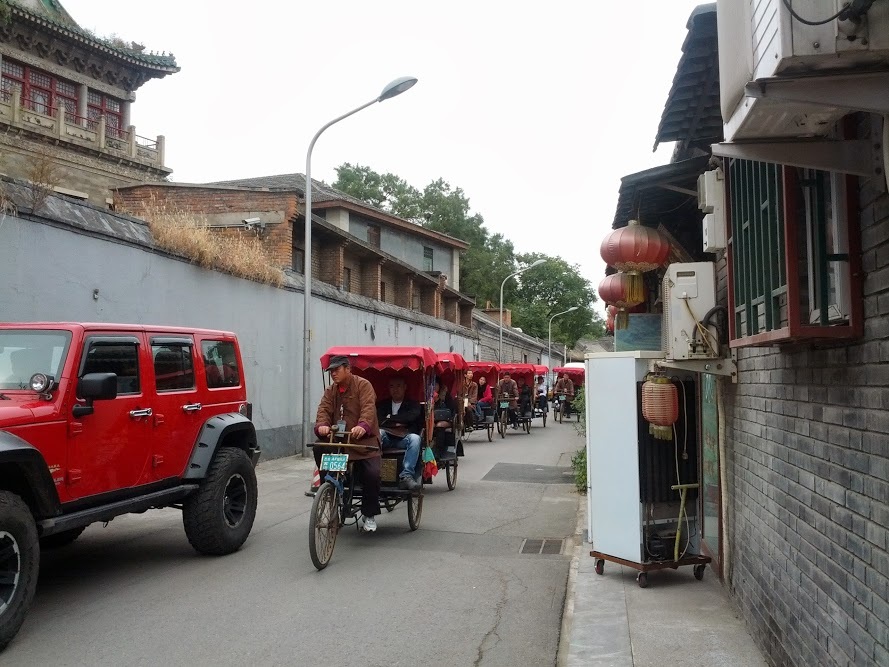




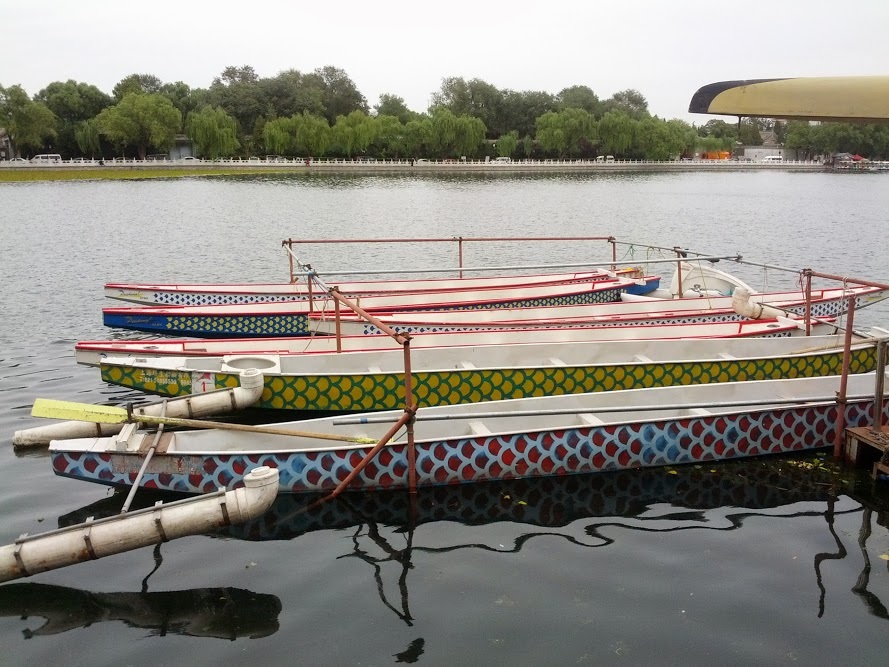




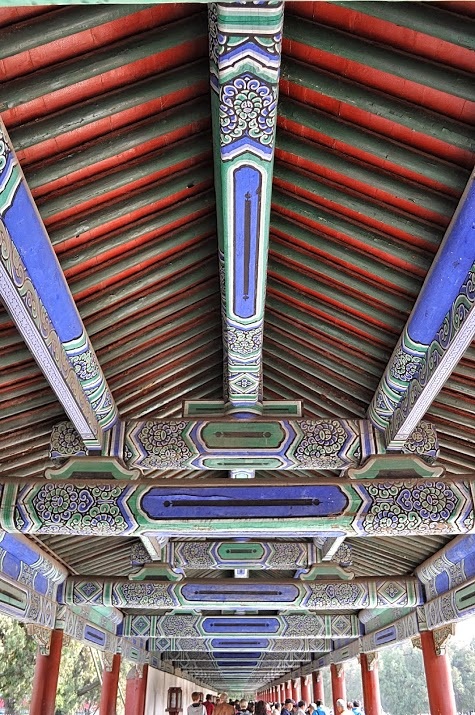







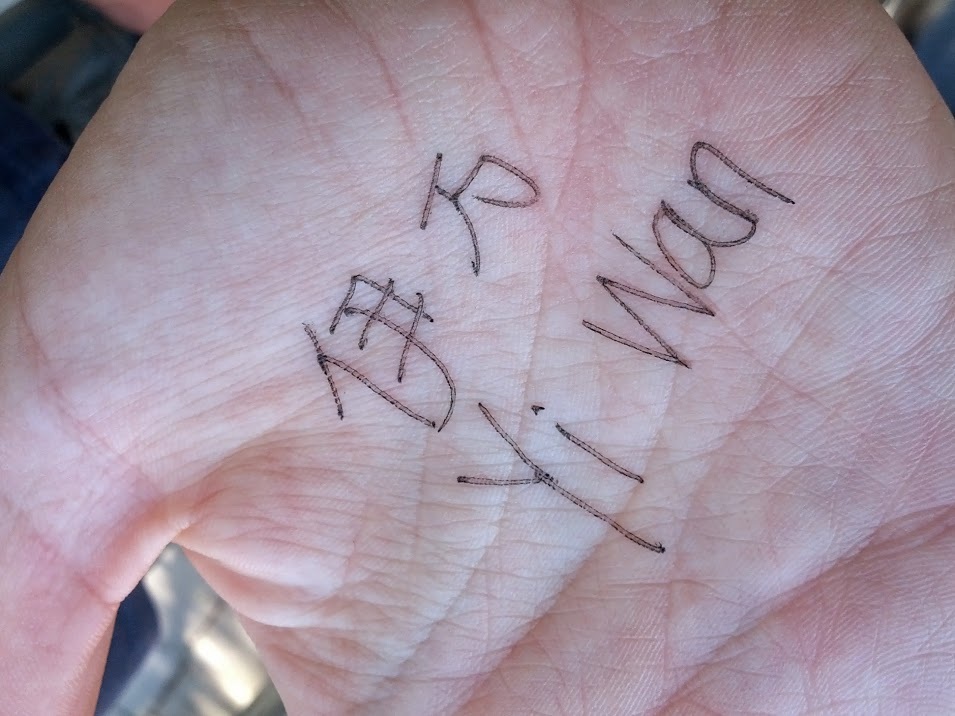
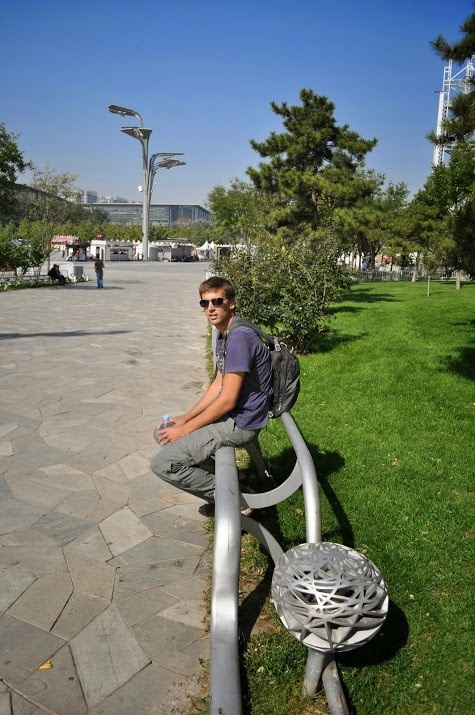

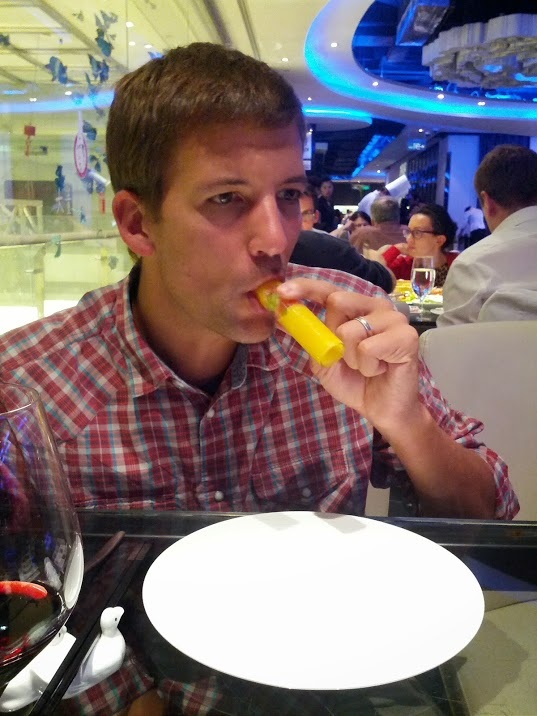








 RSS Feed
RSS Feed
